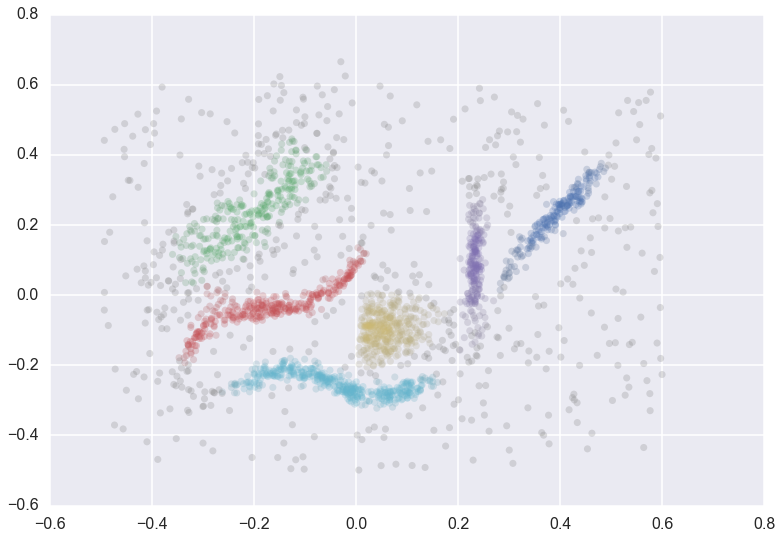Python implementation of Density-Based Clustering Validation
Moulavi, Davoud, et al. "Density-based clustering validation." Proceedings of the 2014 SIAM International Conference on Data Mining. Society for Industrial and Applied Mathematics, 2014.
How do you validate clustering assignmnets from unsupervised learning algorithms? A common method is the Silhoette Method, which provides an objective score between -1 and 1 on the quality of clustering. The silhouette value measures how well an object is classified in its own cluster instead of neighboring clusters. The silhouette (and most other popular methods) work very well on globular clusters, but can fail on non-glubular clusters such as:
Here, we implement DBCV which can validate clustering assignments on non-globular, arbitrarily shaped clusters (such as the example above). In essence, DBCV computes two values:
- The density within a cluster
- The density between clusters
High density within a cluster, and low density between clusters indicates good clustering assignments.
Here, I deliberately picked an example of clusters that density based clustering works well on.
from sklearn import datasets
import matplotlib.pyplot as plt
import seaborn as sns
n_samples=150
noisy_moons = datasets.make_moons(n_samples=n_samples, noise=.05)
X = noisy_moons[0]
plt.scatter(X[:,0], X[:,1])
plt.show()What happens when we try K-means clustering on these non-globular clusters?
from sklearn.cluster import KMeans
kmeans = KMeans(n_clusters=2)
kmeans_labels = kmeans.fit_predict(X)
plt.scatter(X[:,0], X[:,1], c=kmeans_labels)
plt.show()...Not so great. What about HDBSCAN, a density based clustering method?
import hdbscan
hdbscanner = hdbscan.HDBSCAN()
hdbscan_labels = hdbscanner.fit_predict(X)
plt.scatter(X[:,0], X[:,1], c=hdbscan_labels)That's pretty good. To assess the quality of clustering, using Density-Based Clustering Validation, we call DBCV
from scipy.spatial.distance import euclidean
kmeans_score = DBCV(X, kmeans_labels, dist_function=euclidean)
hdbscan_score = DBCV(X, hdbscan_labels, dist_function=euclidean)
print(kmeans_score, hdbscan_score)K means returns a DBCV score of -0.71, and HDBSCAN returns a score of 0.60.



